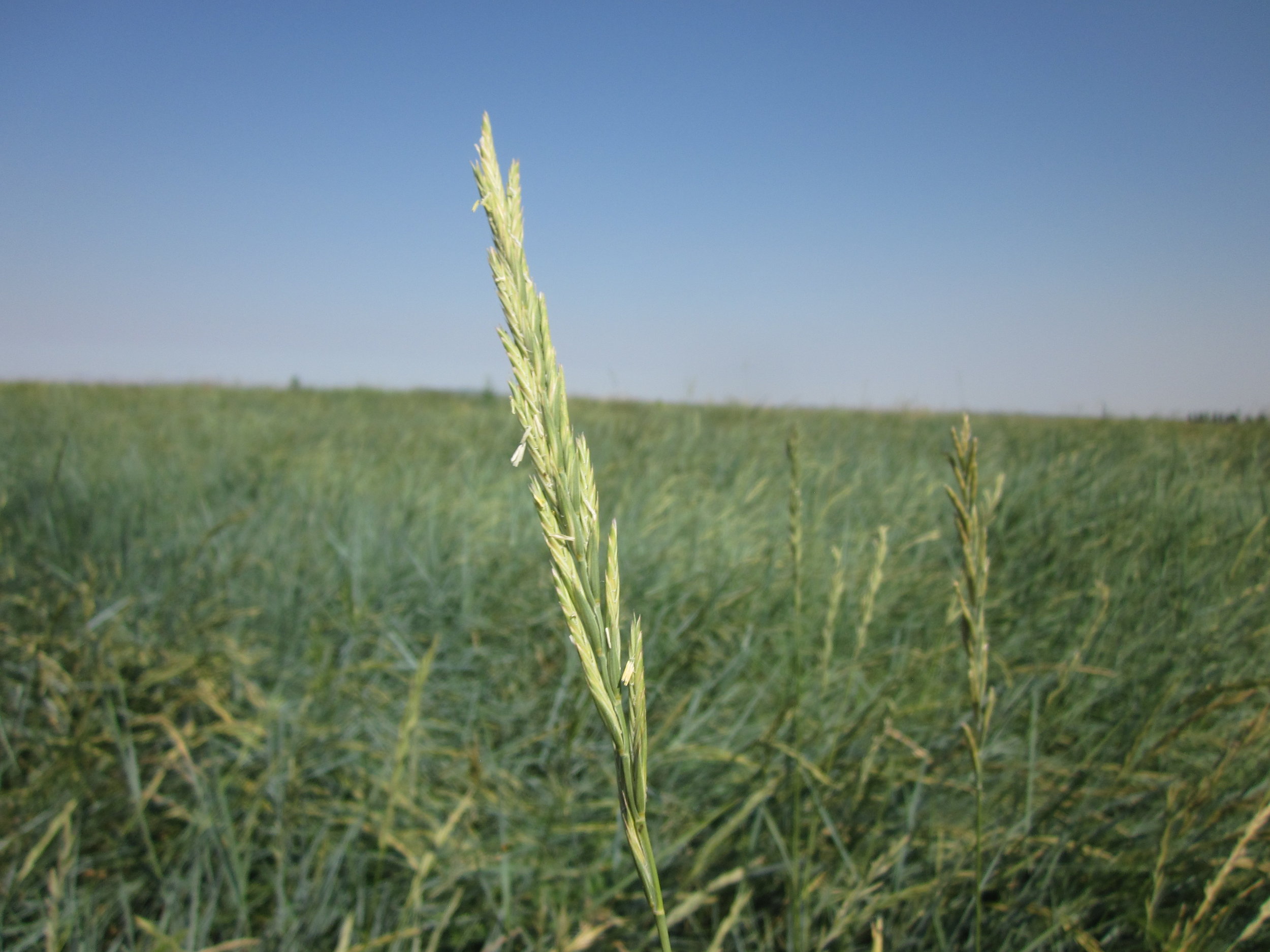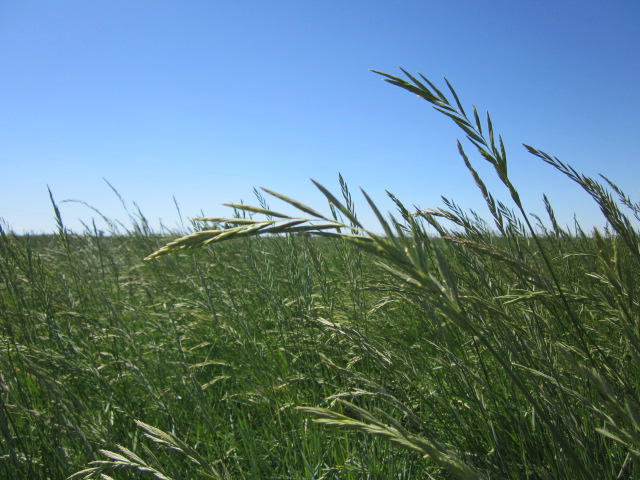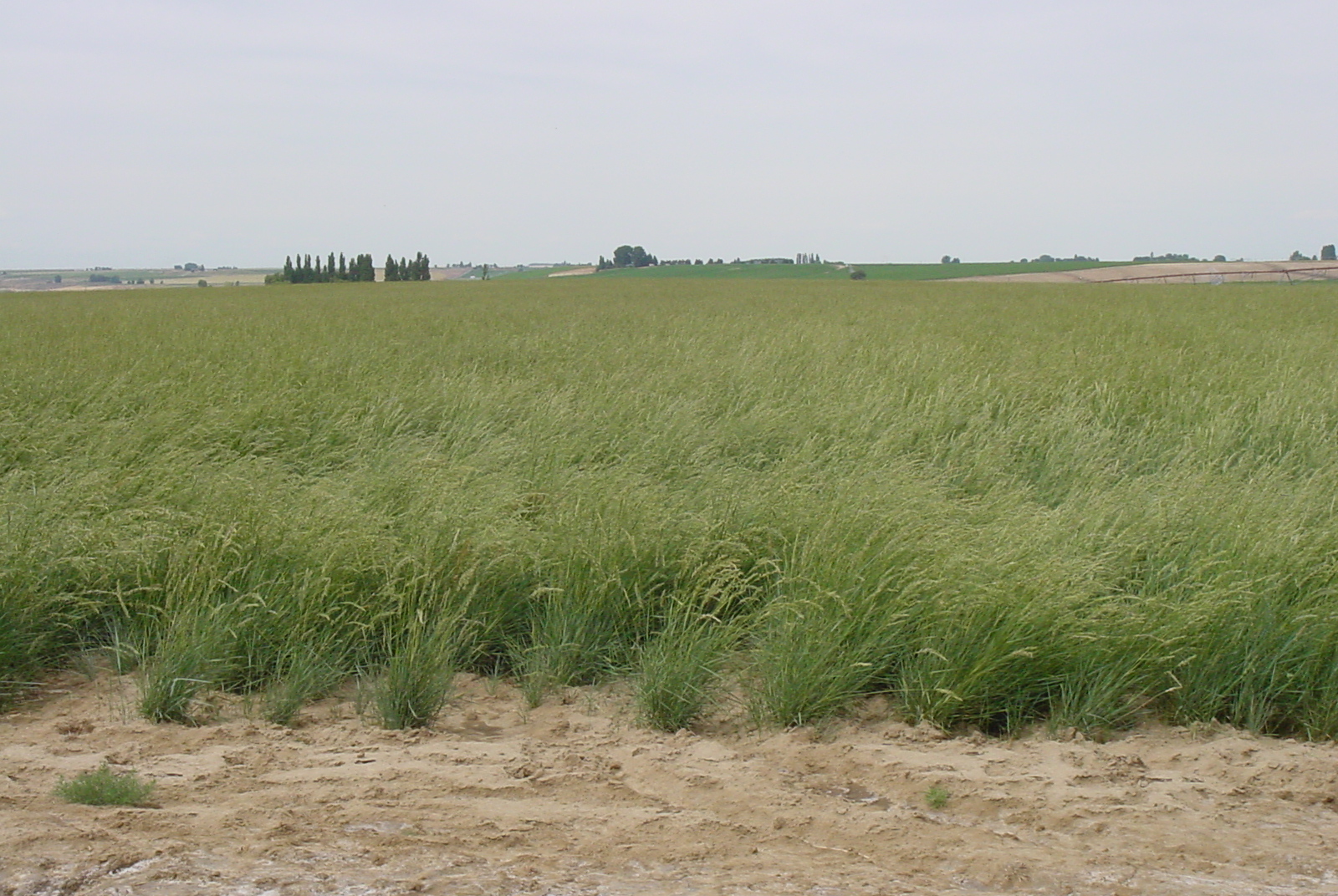Pascopyrum smithii (Western wheatgrass)
Formerly Agropyron smithii. Cool season, strongly rhizomatous, long-lived perennial. Widely adapted; saline-tolerant and moderately drought tolerant. Tolerant of some flooding, heavy soils and cold. One of the best known and most common native grasses in North America, occurring in numerous types of native plant communities. May be replaced by Thickspike wheatgrass (Elymus lanceolatus ssp. lanceolatus) on coarser soils. Moderately palatable to livestock and wildlife. Varieties listed below.
DISTRIBUTION / ADAPTATION
INFORMATION & ATTRIBUTES
Family: Poaceae
Duration: Perennial
Growth Habit: Graminoid
Native Status: Native
Season: Cool
Growth Form: Rhizomatous, sod former
Mature Height: 24 in.
Annual Precipitation: 8-36 in.
Drought Tolerance: High
Shade Tolerance: Intolerant
Elevation:
Fire Resistance: No
Fire Tolerance: High
SOIL ADAPTATION
Coarse Texture: No
Medium Texture: Yes
Fine Texture: Yes
Salinity Tolerance: High
CaCO3 Tolerance: High
pH Range: 4.5-9.0
SEEDING NOTES
Seeds per Pound: 113,800
Seeding Rate: 8-12 PLS lbs/acre
Season: Spring/Fall
Days to Germination:
VARIETIES & LOCAL ACCESSIONS
Arriba - Rapid seedling establishment with aggressive rhizomes. Produces dense medium height forage. Superior seed yielder. (Released 1973)
Barton - Collection from a clayey site. Strongly rhizomatous and leafy intermediate growth type, occurring between the northern and southern varieties. Superior forage and seed yields. (Released 1970)
Recovery - Establishes quicker and has greater seedling vigor than previous releases. Stands remain vigorous even 4-6 years after establishment. Especially useful on military land and arid rangelands having repeat disturbance or wildfire. Forage yields similar to other varieties. (Released 2009)
Rosana - Strongly rhizomatous native collection with excellent seedling vigor. Equal in forage yields to other varieties. Low seed dormancy aids in ease of establishment. (Released 1972)




